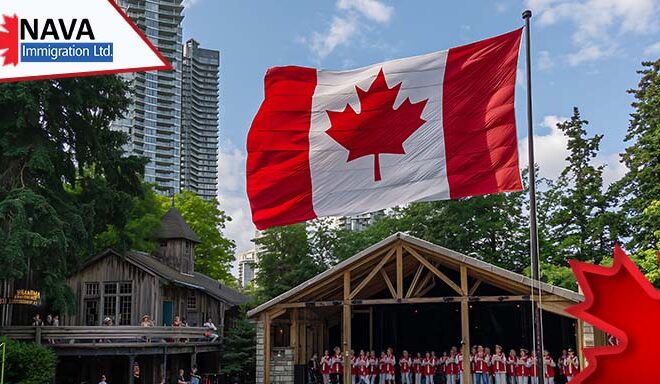Province-wise in-demand occupations in Canada.
IRCC launched the Express Entry category-based draws a few months ago, which has created immigration prospects for candidates lacking such options earlier.
Since the launch, certain applicants for Canadian permanent residency have been selected on the basis of their work experiences rather than their Comprehensive Ranking System (CRS) Score.
Still, many immigration aspirants who want to immigrate to Canada are looking for options for people with work experience in professions that are not targeted in the category-based draws. Discover the immigration options for in-demand occupations in Canada, other than Category based-Express Entry draw in this blog.
Provincial Nominee Program (PNP): Top Immigration Pathway
Besides the Express Entry, the Provincial Nominee Program (PNP) is an effective immigration pathway for such candidates. Previously, Express Entry has surpassed the PNP. But now, the PNP has become the leading pathway for economic immigration to Canada. The PNP is employed by every Canadian province, excluding Quebec and Nunavut.
Even before the Express Entry program, the targeted draws were used in the PNP. This allowed the province to select potential candidates who could contribute to meeting the demographic and economic needs of each province. Therefore, every province’s PNP has a specific list of in-demand targeted occupations. In addition to work experience in in-demand occupations, the PNP of each province has its own eligibility requirements. Interested candidates must meet these criteria in order to qualify for the PNP.
The Canadian government has categorized the jobs using the National Occupation Code (NOC). If you are looking for jobs in Canada similar to yours, you can look for the NOC of the job and determine its eligibility requirements.
Let us cover the province-wise in-demand occupations in Canada, targeted in the PNPs, to help you discover your opportunities in the country.
Province-wise in-demand occupations in Canada.
Discover the in-demand occupations in each province.
Alberta
The PNP of the province of Alberta, known as Alberta PNP (AAIP), does not have a specific list of targeted occupations, but it has released some in-demand professions in the province.
Some of the high-demand professions in Alberta are:
- Registered nurses and registered psychiatric nurses;
- Retail sales supervisors;
- Transport truck drivers;
- Retail and wholesale trade managers and
- Accounting and related clerks, etc.
Besides this, Alberta has released a list of ineligible occupations for PNP, including the professions that are not popular in the province. Additionally, it has a Dedicated Healthcare pathway, Priority Sectors, and Farm Streams, under which it invites healthcare workers and agriculture workers.
British Columbia
The PNP of British Columbia is known as the British Columbia PNP (BCPNP), and the province categorized its in-demand occupations into four classes:
- Tech occupations: These include data scientists, web designers, physicists, astronomers, etc.;
- Healthcare occupations: These include dentists, pharmacists, physiotherapists, etc.;
- Childcare occupations: These include Early childhood educators, assistants; and
- Other priority occupations: These include veterinarians, Animal health technologists, and veterinary technicians.
Manitoba
The PNP of Manitoba, known as the Manitoba PNP (MPNP), is Canada’s oldest PNP. It categorized its targeted occupations into the following ten categories:
- Business, finance, and administration occupations: These include financial managers, human resource professionals, administrative officers and more;
- Natural and applied sciences and similar occupations: These include architects, data scientists, land surveyors, mechanical and civil engineers, and more;
- Health occupations: These include pharmacists, psychologists, physical therapists, and more;
- Occupations in education, law, and social, community and government services: These include lawyers, social workers, therapists, early childhood educators and assistants, and more;
- Occupations in art, recreation, and sport: These include audio and video recording technicians, graphic designers and illustrators, sports and fitness program and service directors, and more;
- Sales and service occupations: These include corporate sales managers, retail sales supervisors, cooks, bakers, and more;
- Trades, transport and equipment operators, and relevant occupations: These include construction managers, tool and die makers, electricians, plumbers, carpenters and more;
- Natural resources, agriculture, and related occupations: These specifically target managers in agriculture;
- Occupations in manufacturing and utilities: These target manufacturing managers, utilities managers, power engineers, power system operators; and
- Rural in-demand occupations: These target Nurse’s aides, orderlies, patient service associates, industrial butchers, meat cutters, poultry preparers, and related workers.
New Brunswick
The PNP of New Brunswick is called the New Brunswick PNP (NBPNP), and it does not maintain a list of in-demand occupations. However, the province has declared the details on the sectors having the most job vacancies. The province updates this report on a monthly basis. New Brunswick’s July 2023 report includes the following sectors:
- Sales and service: These include occupations like retail salesperson, cashiers, retail sales supervisors, etc.;
- Other services: These include occupations like administrative assistants, hairstylists, barbers, estheticians, bus mechanics, etc.;
- Business, finance, and administration: These include light-duty cleaners, financial sales representatives, police officers, administrative assistants, other customer and information service representatives, etc.;
- Trades, transport, and equipment operators and related: These include jobs such as store shelf stockers, clerks, transport truck drivers, letter carriers, labourers in food, beverage, and associated products processing (among others);
- Education, law, and social and community government: These include jobs such as elementary and kindergarten schoolteachers, university professors and lecturers, non-commissioned ranks of the Canadian armed forces, building superintendents, and more; and
- Health occupations: These include occupations such as licensed practical nurses, early childhood educators and assistants, home support workers, nurses’ aides, orderlies, patient service associates, etc.
Newfoundland and Labrador
The PNP of Newfoundland and Labrador is known as the Newfoundland and Labrador PNP (NLPNP). It organizes its in-demand occupations under four broad classes:
- Healthcare occupations: This includes jobs like physicians, nurse practitioners, licensed practical nurses, clinical psychologists, etc.;
- Information Communications Technology occupations: This includes occupations like software developers, biomedical engineers, UI/UX developers, AI developers, etc.;
- Technical specialist occupations: This includes jobs like cloud specialists, bioinformaticians, security specialists, data analysts, offshore technicians, etc., and
- Aquaculture occupations: This includes jobs like captains (requiring a fishing master class-4 certificate), facility technicians, assistant managers, farming and feeding managers, and more.
Northwest Territories
The PNP of the Northwest Territories, also known as the Northwest Territories PNP (NTPNP), does not maintain a targeted occupations list. However, the province announced the anticipated major in-demand jobs for the next 15 years for the region, starting with the year 2019.
The province of Northwest Territories organizes the occupations in groups based on the required education or experience level instead of categorizing them by categories.
The NTPNP organizes five occupations that it anticipates to have the highest job vacancies between now and 2034.
These jobs with the highest expected job vacancies include the following:
- Jobs requiring education less than a high school level. The three occupations under this category include janitors, caretakers and building superintendents, light duty cleaners, and cashiers.
- Jobs requiring education of high-school level. The three occupations include Heavy equipment operators (except cranes), retail salespersons, transport truck drivers;
- Jobs requiring an occupational certification level of education in the skilled trades. The three occupations in this group include Carpenters, electricians (excluding industrial and power systems), and truck and bus mechanics, automotive service technicians, and mechanical repairers;
- Jobs requiring a college diploma level of education. The three occupations under this category include administrative officers, administrative assistants, and social and community service workers;
- Jobs requiring a university degree level of education. The three professions under this group were elementary school and kindergarten teachers, registered nurses and psychiatric nurses, and secondary school teachers; and
- Jobs requiring a management level of experience. The occupations under this group were retail and wholesale trade managers, construction managers, and financial managers.
Nova Scotia
The PNP of Nova Scotia is known as the Nova Scotia Nominee Program (NSNP). The province offers a small list of in-demand occupations across a variety of sectors.
The high-demand occupations specifically lie within training, experience, education, and responsibilities (TEER) levels 3, 4, and 5.
Typically, the TEER code ranges between 0 and 5. The jobs at level 0 are the most responsible and require high education and experience, whereas the jobs at level 7 require the least education and experience.
In the province of Nova Scotia, the following are the targeted, in-demand occupations:
- Nurse’s aides;
- Light duty cleaners;
- Transport truck drivers;
- Food and beverage servers;
- Heavy equipment operators;
- Construction trades helpers and labourers and
- Kitchen helpers, food counter associates, and related support occupations.
Ontario
The PNP of Ontario, known as Ontario PNP (OINP), has an OINP Employer Job Offer stream, which it uses to welcome candidates with skills in a high-demand occupation as well as an employer job offer.
The other eligibility requirements for this stream are work experience, language ability, median salary, etc.
Besides this, in Ontario, the high-demand occupations are categorized in two ways:
1. In-demand jobs for positions anywhere in Ontario:
Some of these include:
- Home support workers, caregivers, and related occupations;
- Meat cutters and fish mongers (retail and wholesale), and
- Construction trades helpers and laborers.
2. In-demand positions outside of the Greater Toronto Area (GTA)
Some of these include:
- Machine operators, mineral, and metal processing;
- Metalworking and forging machine operators; and
- Mechanical assemblers and inspectors.
Prince Edward Island (PEI)
The PNP of PEI, known as Prince Edward Island’s PNP (PEIPNP) prioritizes the workers in the below-mentioned high-demand occupations.
- Material handlers;
- Light duty cleaners;
- Transport truck drivers;
- Construction trades helpers and labourers;
- Nurse’s aides, orderlies, and patient service associates;
- Other labourers in processing, manufacturing, and utilities;
- Machine operators and process control for food and beverage processing); and
- Poultry preparers, industrial butchers and meat cutters, and related workers.
Saskatchewan
The PNP of Saskatchewan, known as Saskatchewan’s PNP (SINP), does not have an in-demand occupation list. The province targets occupations in TEER levels 0, 1, 2, and 3. However, the province of Saskatchewan has issued an in-eligibility occupations list, which are not in demand in the province. Candidates with such occupations could not apply to Saskatchewan’s PNP via both the Occupations in Demand streams as well as Express Entry.
Yukon
The PNP of Yukon, Yukon PNP (YNP) doesn’t have an eligible occupation list. It uses two different streams to invite candidates, namely, the Skilled Worker stream and the Critical Impact Worker stream.
Candidates having occupations within TEER levels 0, 1, 2, and 3 are targeted under the Skilled Worker stream, and occupations within TEER levels 4 and 5 are targeted under the Critical Impact Worker stream.
Notably, both employer and employee need to be actively involved in the application program.
Closing points on Province-wise in-demand occupations
So, this was all about the province-wise in-demand occupations in Canada. If you found yourself ineligible for the Express Entry Category-based draws, you may be eligible for the PNP draws with in-demand job occupations similar to yours. Many provinces conduct targeted draws and invite candidates based on their occupations to apply for permanent status. Check which provinces have job vacancies similar to your interest and how you can apply.





